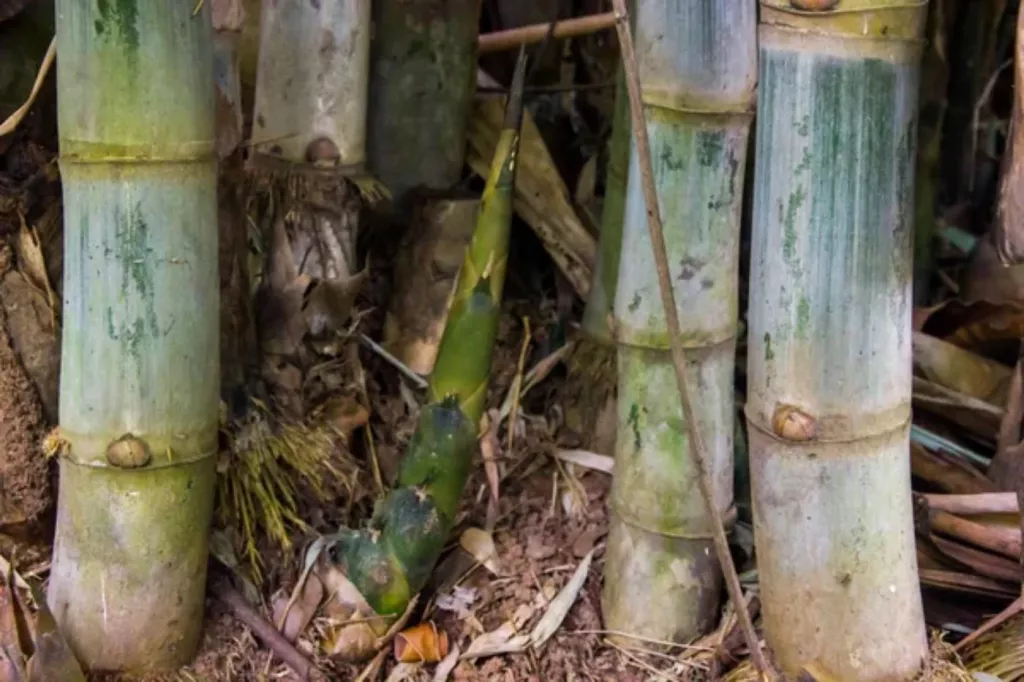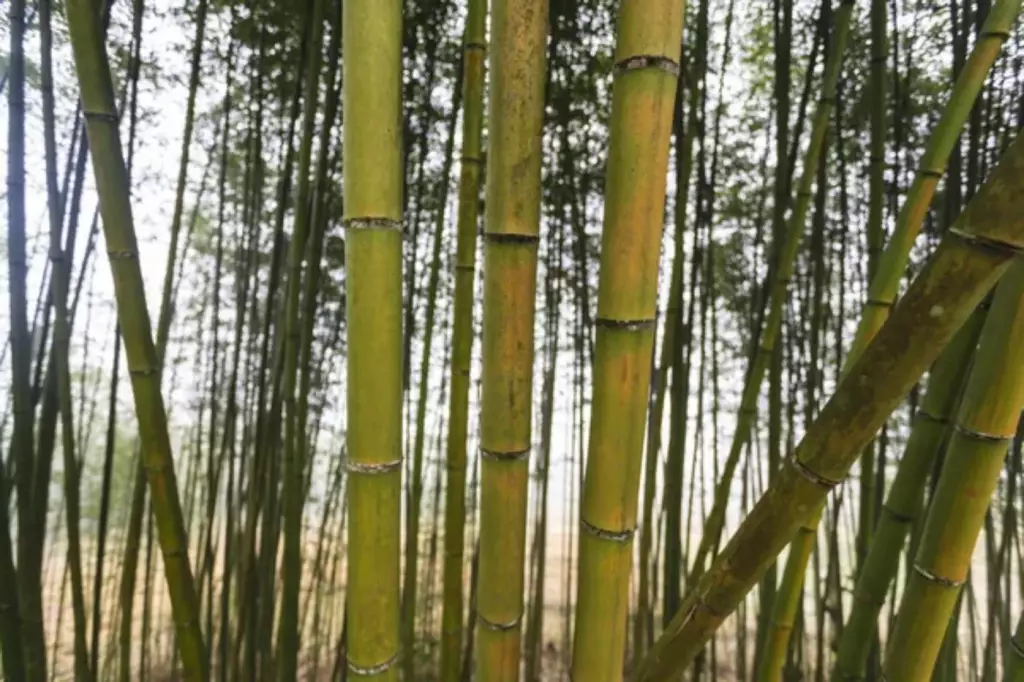Average Bamboo Yield per Acre (What to Expect)
A well-managed acre of bamboo can produce significant yields. However, the exact amount depends on the species, climate, and cultivation practices. For those considering bamboo cultivation, this article aims to provide insights into its potential productivity, offering guidance on how different variables influence yield per acre.
The average bamboo yield per acre typically ranges from 20 to 60 tons per acre annually, depending on the species, climate, and management practices. Bamboo, being a fast-growing plant, can produce a significant amount of biomass quickly, making it a lucrative crop for growers.
The average yield per acre of bamboo swings wildly based on the local climate, the richness of the soil, and even the specific type of bamboo you decide to grow. Let's take a closer look at the major bamboo producers around the globe.
Summary
- Beema bamboo can yield up to 35 tons per acre during the first few years and can reach up to 40–50 tons per acre annually after maturity.
- Yield varies significantly by bamboo species; Guadua bamboo yields up to 40 tons per acre, while Black bamboo only yields 10 per acre.
- Tropical and subtropical regions like Southeast Asia and South America report higher yields (15–25 tons and 20–30 tons per acre, respectively) due to their ideal growing conditions for bamboo.

On this page:
Bamboo Varieties and Their Average Yield per Acre
Below is a list of the different varieties of bamboo and their average yield per acre in tons.
| Common Name | Bamboo Variety | Average Yield per Acre (tons) |
|---|---|---|
| Beema Bamboo | Bambusa balcooa | 35 |
| Moso Bamboo | Phyllostachys edulis | 30 |
| Red Margin Bamboo | Phyllostachys rubromarginata | 20-25 |
| Guadua Bamboo | Guadua angustifolia | 40 |
| Moso Bamboo | Phyllostachys edulis | 25-30 |
| Giant Bamboo or Asper Bamboo | Dendrocalamus asper | 30-35 |
| Indian Thorny Bamboo | Bambusa bambos | 20-30 |
| Bengal Bamboo | Bambusa tulda | 25-30 |
| Weaver's Bamboo | Bambusa textilis | 15-20 |
| Tropical Black Bamboo | Gigantochloa atroviolacea | 20-25 |
| Black Bamboo | Phyllostachys nigra | 10-15 |
| Male Bamboo or Calcutta Bamboo | Dendrocalamus strictus | 25-30 |
| Common Bamboo or Golden Bamboo | Bambusa vulgaris | 20-25 |
| Giant Timber Bamboo | Bambusa oldhamii | 20-25 |
Beema bamboo yield per acre
Beema bamboo, a type of timber bamboo, is known for its rapid growth and high yield. On average, you could expect to harvest around 35 tons per acre after the initial growth period of about 3-4 years.
Remember, profit from Beema bamboo often becomes substantial after this period since there's no significant yield before the plants mature.
| Year | Expected Yield Range (tons per acre) | Estimated Profit |
|---|---|---|
| Year 4-7 | 25-35 | $5,000 - $7,000 |
| Year 8+ | 30-40 | $7,500 - $10,000 |
Moso bamboo yield per acre
Moso bamboo is another popular choice for commercial cultivation, offering substantial returns. After a 5-6 year maturity period, a fully harvested acre of Moso bamboo can yield returns of about $30,000 per acre per year.
This is based on high-quality bamboo commonly used in the production of luxury bamboo goods.
| Year | Potential ROI |
|---|---|
| Year 5-6 | Up to $30,000 per acre |
To learn more about the profitability of bamboo farming, you can check out this article.
Other bamboo varieties and their average yield
-
Red margin bamboo: This species has a yield of 20-25 tons per acre and is appreciated for its distinctive red margins on the leaves. It's commonly used for ornamental purposes and in making crafts.
-
Guadua bamboo: Known for the highest yield among the listed species, at 40 tons per acre. Guadua is extremely strong and is widely used in construction, especially in South America for building houses and bridges.

-
Giant bamboo or Asper bamboo: This bamboo can yield between 30-35 tons per acre. It's known for its large diameter and is often used in furniture and construction, as well as for edible shoots.
-
Indian thorny bamboo: This species yields 20-30 tons per acre. It is characterized by its thorny nature and is commonly used for fencing, construction, and paper production.
-
Bengal bamboo: Yielding 25-30 tons per acre, Bengal Bamboo is widely used in the paper industry. It's also used for making crafts and in construction.
-
Weaver's bamboo: With a yield of 15-20 tons per acre, this bamboo is known for its fine fibers, making it ideal for weaving and textile production.
-
Tropical black bamboo: This species produces 20-25 tons per acre. It's notable for its striking black stems and is often used as an ornamental plant or in making musical instruments.
-
Black bamboo: Yielding 10-15 tons per acre, Black Bamboo is appreciated for its unique black-colored stems and is commonly used in landscaping and as an ornamental plant.
-
Male bamboo or Calcutta bamboo: This variety produces 25-30 tons per acre. It's known for its strong wood, used in construction, papermaking, and to make musical instruments.
-
Common bamboo or golden bamboo: With a yield of 20-25 tons per acre, this bamboo is widely used for its aesthetic appeal in landscaping, as well as in making furniture and crafts.
-
Giant timber bamboo: This species yields 20-25 tons per acre and is known for its large size. It's commonly used in construction, for making furniture, and as an ornamental plant.
Average Bamboo Yield per Acre for Different Regions
When you venture into bamboo farming, understanding the average yield per acre is crucial, as this can vary significantly depending on your location.
| Region | Yield (tons per acre) |
|---|---|
| India | 10 - 20 |
| Southeast Asia | 15 - 25 |
| South America | 20 - 30 |
| North America | 5 - 10 |
India is one of the largest bamboo producers
India is a South Asian country known for its diverse culture, rich history, and varied geography. It is one of the world's largest bamboo producers, with significant bamboo cultivation across various states.

In the Indian context, bamboo is more than a plant — it's an integral part of the economy, particularly in rural areas. If you're farming in India, you might expect yields to range considerably, from 10 to 20 tons of bamboo per acre annually, given ideal conditions.
Southeast Asia is known for its significant contribution to bamboo cultivation
In Southeast Asia, the average yield per acre is approximately 15 to 25 tons. This region comprises countries such as Thailand, Vietnam, Indonesia, the Philippines, and others.
It is known for its tropical climate, diverse ecosystems, and significant bamboo cultivation, which plays a crucial role in the region's economy.
South America is perfect for extensive bamboo plantation
South America is a continent known for its Amazon rainforest, diverse wildlife, and rich biodiversity. Countries like Brazil, Colombia, and Ecuador have extensive bamboo cultivation, contributing to the region's sustainable development efforts.
South America experiences an average yield of 20 to 30 tons per acre.
North American regions tend to have lesser bamboo yields
In North America, yields might be lower due to less ideal climatic conditions and market dynamics. This region includes countries such as the United States, Canada, and Mexico.
While bamboo cultivation is not as widespread as in other regions, there is a growing interest in bamboo farming due to its environmental benefits and various commercial applications. The average yield of bamboo per acre in North America is in the range of 5 to 10 tons.

Factors Affecting Bamboo Yield
The table below outlines key factors affecting bamboo yield, including the influence of bamboo species, seedling quality, management practices, climate and environment, soil quality, and labor.
| Factor | Influence on Yield |
|---|---|
| Bamboo species | High: some species might yield more biomass per acre |
| Seedling quality | Moderate: healthy seedlings are likely to produce more fiber |
| Management practices | High: proper rotation and care boost productivity |
| Climate & environment | High: optimal conditions increase growth and yield |
| Soil quality | High: fertile soil supports higher density and healthier plants |
| Labor | Moderate to High: skilled labor optimizes plantation management |
Bamboo species and seedlings
Different bamboo species have varying levels of biomass production. Your choice of species directly influences the yield. Additionally, the quality of seedlings used can significantly affect your plantation's output.
Plantation management
Proper management, including the rotation schedule and maintenance practices, has a substantial impact on the bamboo yield per acre. Methodical thinning and harvesting can optimize growth and productivity.
Climate and environment
The climate is crucial for growing bamboo; it thrives in a range of conditions but has optimal requirements for temperature and rainfall. Your local climate can either bolster or hamper bamboo growth.
Soil quality and resources
Nutrient-rich soil is a fundamental resource for higher fiber yield. Regular soil tests can guide you in managing soil health and fertility to support your bamboo crop. Remember that a lack of nutrients can cause a slow growth rate in bamboo.
Adequate labor influences a plantation's overall efficiency
Adequate labor is essential for maintenance tasks like weeding, thinning, and harvesting. Skilled labor ensures efficient management of these operations, influencing your plantation's overall efficiency.
Farming Practices to Enhance Yield
Practicing sustainable techniques
To increase your bamboo yield, start by adopting sustainable farming practices. Sustainable techniques include minimal soil disturbance and maintaining a balanced ecosystem, which helps promote soil health and plant vigor.

Proper seedling selection
It's essential to choose the right seedlings for your bamboo plantation. Look for healthy, disease-free seedlings appropriate for your climate and soil type.
Utilizing mulch
Using mulch in your bamboo plantation can help retain soil moisture, suppress weeds, and add organic matter to the soil, leading to improved growth conditions for bamboo.
Keeping in mind the optimal spacing
Properly spacing your bamboo plants is crucial for maximizing yield. Space your plants to allow sufficient room for growth while optimizing sunlight and air circulation.

